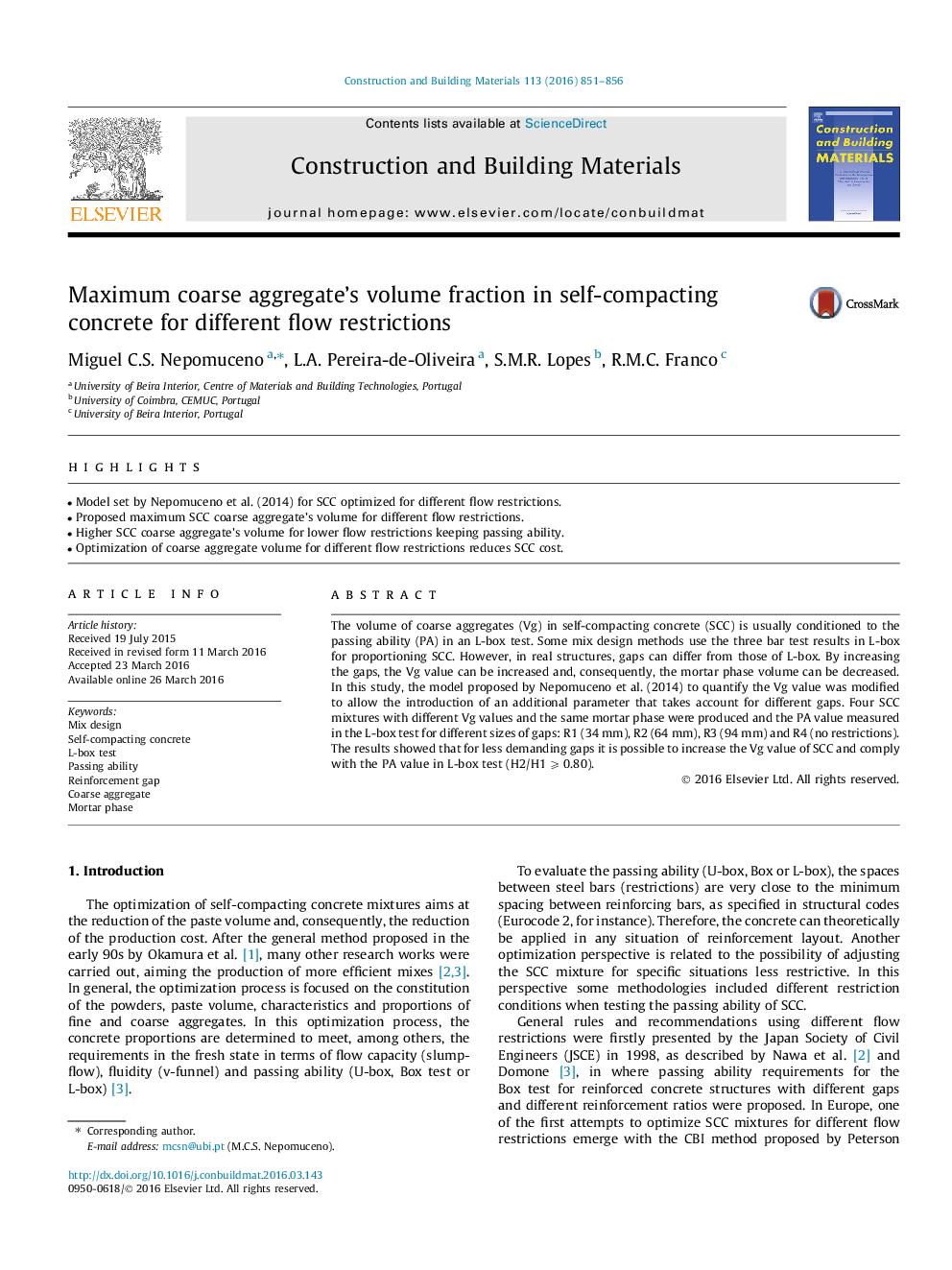| Article ID | Journal | Published Year | Pages | File Type |
|---|---|---|---|---|
| 256214 | Construction and Building Materials | 2016 | 6 Pages |
•Model set by Nepomuceno et al. (2014) for SCC optimized for different flow restrictions.•Proposed maximum SCC coarse aggregate’s volume for different flow restrictions.•Higher SCC coarse aggregate’s volume for lower flow restrictions keeping passing ability.•Optimization of coarse aggregate volume for different flow restrictions reduces SCC cost.
The volume of coarse aggregates (Vg) in self-compacting concrete (SCC) is usually conditioned to the passing ability (PA) in an L-box test. Some mix design methods use the three bar test results in L-box for proportioning SCC. However, in real structures, gaps can differ from those of L-box. By increasing the gaps, the Vg value can be increased and, consequently, the mortar phase volume can be decreased. In this study, the model proposed by Nepomuceno et al. (2014) to quantify the Vg value was modified to allow the introduction of an additional parameter that takes account for different gaps. Four SCC mixtures with different Vg values and the same mortar phase were produced and the PA value measured in the L-box test for different sizes of gaps: R1 (34 mm), R2 (64 mm), R3 (94 mm) and R4 (no restrictions). The results showed that for less demanding gaps it is possible to increase the Vg value of SCC and comply with the PA value in L-box test (H2/H1 ⩾ 0.80).
